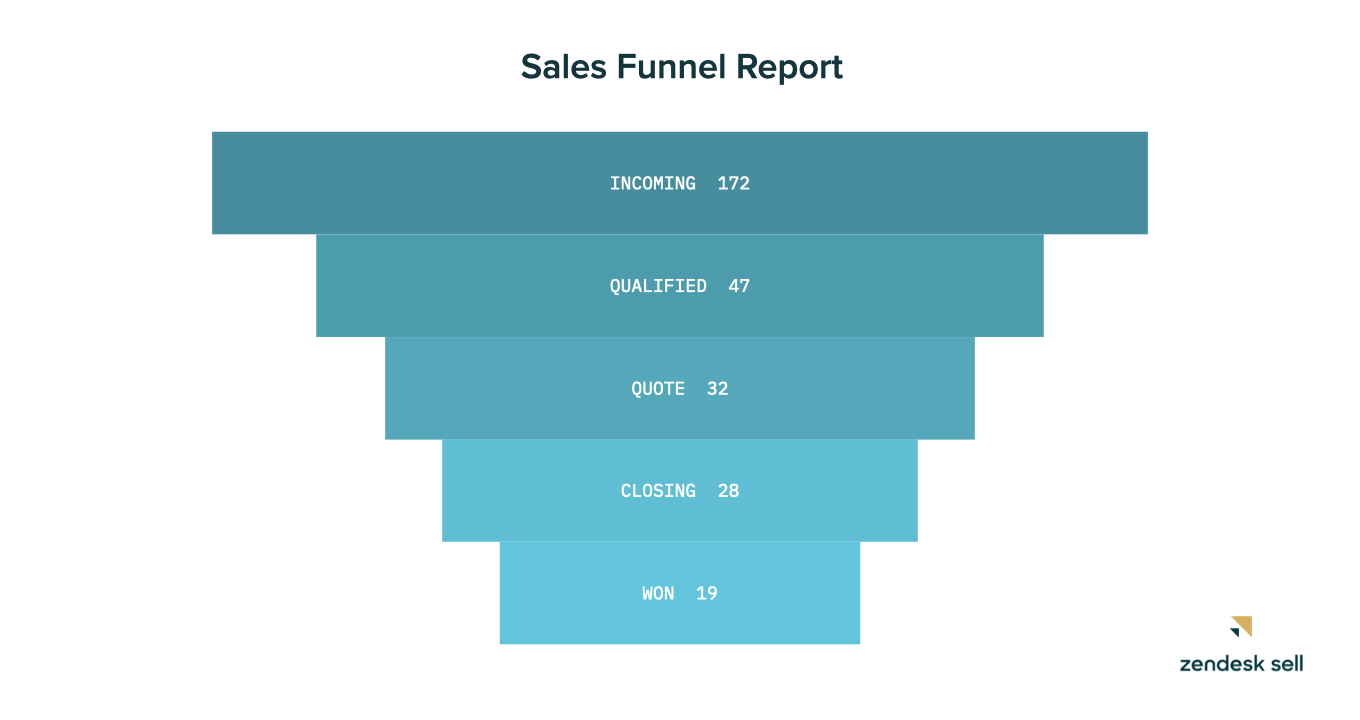Article • 7 min read
Full-funnel tracking approach for quality lead generation
Gabriel Tontini
Content Marketing Lead, LeadsBridge
Keeping track of the sales funnel is an essential part of any sales and marketing strategy. By doing so, you’re able to keep a close eye on a lead’s journey from the top of the funnel to the bottom and make any necessary adjustments along the way. This process is called full-funnel tracking, and it is a vital approach to producing quality leads.
The sales funnel is a great way to get a visual of the process of turning leads into customers. The funnel represents the path narrowing as a lead gets closer and closer to the end goal: conversion.

Understanding this is essential because the full-funnel tracking approach isn’t quite as cut and dry as dropping the lead into the funnel and watching them move towards the bottom. Instead, there is a complete process that one must consider and refine in order to produce quality leads.
What is a marketing funnel?
The marketing funnel starts at the very top of the customer journey. Here, marketers try to gather as many leads as possible by reaching a very large target audience.
As the leads continue through the funnel, the path becomes more and more narrow, and the quality of leads begins to really shine through. As the funnel begins to narrow, more qualified leads will be targeted.
This marketing approach is designed to reach potential leads based on where they might fall within the funnel. Since each lead requires a different approach, your marketing strategy might require some adjustments along the way.
Why do you need full-funnel visibility?
Without full-funnel visibility, you will be severely limited on options when it comes to lead generation and nurturing. If all you have is a visual on a single touch-point, then you really won’t have a clue when a lead will need guidance, much less what kind of guidance they might need.
Instead, if you implement full-funnel tracking and have a clear visual on each and every touch-point, you gain invaluable insight to ensure that the lead makes their way to the end of the funnel. By doing so, your lead generation campaigns can be optimized for conversions, not for leads.
For example, it’s quite common that by using tools such as Facebook Lead Ads, companies are able to generate a large volume of leads.
Problems arise when we want to receive more accurate information on lead quality. How many of these leads have requested a demo of your product or service? How many have started a trial? How many have bought something? This is where sales funnel software and pipeline tracking software helps.
Mid-funnel conversions
Full-funnel tracking is also incredibly important for conversions that take place mid-funnel. Again, if we visualize the funnel, we can see that all the leads are collected at the very top. This could be a website visit, an ad form filled out, and so on. But as we make our way through the funnel, we can indeed have a conversion without a purchase.
Let’s say that the lead signs up for a trial, or they request a demo. These are very important conversions because they allow you to test your marketing funnel for bottlenecks. If you have 100 new leads, 50 request a demo, and only 1 goes on to make a purchase for the final conversion, then we can understand that there’s a potential issue. Somewhere along the way, the funnel is being bottlenecked, and the leads stop their journey through the funnel.
The reason this information is so important is that it allows you to investigate the possible issues. Ideally, this will allow you to address the problem, fix it, and increase your conversion rate altogether.
What are the essential stages of the sales funnel?
To achieve full-funnel tracking, it’s important to define the stages of your funnel. Marketers typically break the funnel into three stages: Awareness, consideration, and conversion.
In the awareness stage, the lead first becomes aware of your brand or product as a viable option for their needs. In the consideration stage, the lead begins to consider your product as an option. And finally, in the conversion stage, they take the plunge and become a customer.

This isn’t to say that you will only have 3 touch-points. In fact, depending on the company, there could even be 10 touch-points within each stage. The point is not to define your touch-points now, but to consider how to full-funnel track given these 3 stages.
Unlock a measurable sales pipeline
This free guide examines three vital steps to establish a measurable sales pipeline that drives repeatable, predictable sales growth.
What should you be tracking?
Now we’re led to the question: What should you be tracking at each stage? Well, again, this depends on your campaign, company, and goals.
Overall, there are a number of things that you could be tracking.
Here are a few examples given in each stage:
Awareness
In the awareness stage, you’ll mainly be focusing on things like Facebook Lead Ads and online advertising in general. Here, You’ll want to keep track of your impressions and reach.
Consideration
In the consideration stage of the marketing funnel, you’ll be focusing on more tactics like email marketing and retargeting. This is where a lot of nurturing will come into play, as you have to get the timing right. With the consideration stage, there are many metrics that you might want to consider tracking. For example, you may want to know how many leads requested a demo of your product or how many calls your sales team has made.
Conversion
Conversion represents the moment when a specific goal of a marketing campaign is achieved. This is usually the sale of a specific service, but this is not always the case. For example, if a Saas may need to track, among its conversions, a Demo request or a trial of its product.
The most effective solution to full-funnel tracking
When it comes to full-funnel tracking, there are a lot of steps and stages that need to be considered. In addition to that, you always have to be on your toes and ready to adapt for the lead’s sake. But, there is an easier way to do this.
With LeadsBridge, you can seamlessly integrate your marketing tools with your favorite sales CRMs like Zendesk Sell. By doing so, you’ll be able to grab the lead as soon as they enter a new stage of the sales funnel. All this is possible simply because you will have a better visual of their overall journey, and you’ll be ready as soon as they need nurturing.
Google’s Offline Conversation Tracking and Facebook’s Conversions API are designed to help advertisers track the conversions generated through their campaigns, all while maintaining proper data privacy as described by law. The API offers businesses the ability to share exactly what data they want, which is more than Cookies offer. Combining the two (Google OCT/Conversions API + Cookies) makes for the best experience when it comes to full-funnel visibility.
LeadsBridge helps companies seamlessly connect Google and Facebook to any CRM so that you can be sure to track all your leads in great detail, all the way through the funnel. This means that at every touchpoint and at every conversion (no matter what stage of the funnel it is), you will have a better plan on exactly what you need to do to keep the lead journey going, and most importantly you have visibility on which campaigns are producing more results.
Focus on the metrics that matter
As you can see, the full-funnel tracking approach allows you to focus on metrics that are truly important to your business.
To date, it is possible to obtain these metrics by exploiting the cookies installed on your website to track what is happening at the top of the funnel, and by linking the data contained in your CRM to your advertising platforms to understand exactly which campaigns generate conversions.
Full-funnel tracking and full-funnel marketing can seem a little linear, but it comes back full-circle. Once the leads make their way through the sales funnel, you can take the time to analyze what went right and what went wrong. This will ultimately lead to better and far more effective marketing efforts.
